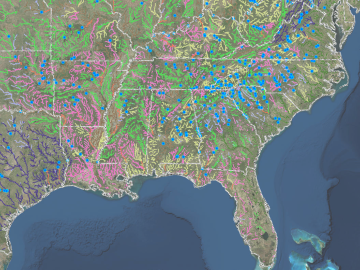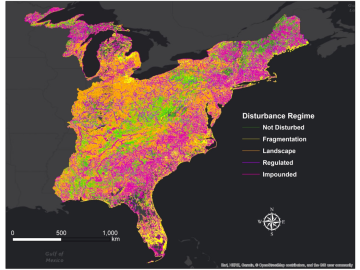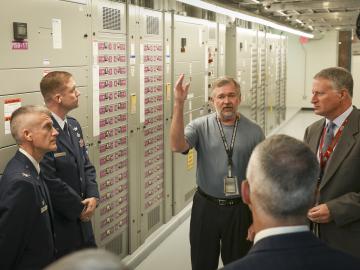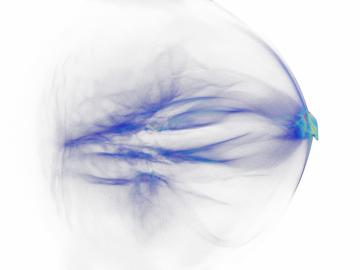
Filter News
Area of Research
- Advanced Manufacturing (8)
- Biological Systems (3)
- Biology and Environment (8)
- Building Technologies (3)
- Clean Energy (108)
- Climate and Environmental Systems (4)
- Computational Biology (1)
- Computational Engineering (1)
- Computer Science (8)
- Energy Frontier Research Centers (1)
- Fossil Energy (1)
- Fuel Cycle Science and Technology (1)
- Fusion Energy (7)
- Materials (107)
- National Security (7)
- Neutron Science (49)
- Nuclear Science and Technology (25)
- Nuclear Systems Modeling, Simulation and Validation (1)
- Quantum information Science (3)
- Sensors and Controls (2)
- Supercomputing (54)
- Transportation Systems (1)
Date
News Topics
- 3-D Printing/Advanced Manufacturing (20)
- Advanced Reactors (8)
- Artificial Intelligence (13)
- Big Data (8)
- Bioenergy (11)
- Biology (1)
- Biomedical (9)
- Biotechnology (1)
- Clean Water (6)
- Climate Change (1)
- Composites (5)
- Computer Science (49)
- Critical Materials (1)
- Cybersecurity (8)
- Energy Storage (10)
- Environment (22)
- Exascale Computing (2)
- Frontier (2)
- Fusion (9)
- Grid (8)
- Isotopes (7)
- Machine Learning (5)
- Materials Science (30)
- Mercury (2)
- Microscopy (10)
- Molten Salt (5)
- Nanotechnology (15)
- Neutron Science (26)
- Nuclear Energy (27)
- Physics (15)
- Polymers (7)
- Quantum Science (13)
- Security (9)
- Space Exploration (6)
- Summit (11)
- Sustainable Energy (8)
- Transportation (19)
Media Contacts

Kimberly Jeskie and Michelle Kidder of the Department of Energy’s Oak Ridge National Laboratory have been named 2018 American Chemical Society (ACS) fellows. ACS is a professional organization focused on the advancement of chemistry enterprise and the improvement of...

Fusion scientists from Oak Ridge National Laboratory are studying the behavior of high-energy electrons when the plasma that generates nuclear fusion energy suddenly cools during a magnetic disruption. Fusion energy is created when hydrogen isotopes are heated to millions of degrees...

Oak Ridge National Laboratory has created new tools to better understand the nation’s waterways and identify potential sites to generate hydropower—a domestic renewable energy resource. The tools allow users such as scientists, resource agencies and industry to access information ab...



Oak Ridge National Laboratory scientists have developed a crucial component for a new kind of low-cost stationary battery system utilizing common materials and designed for grid-scale electricity storage. Large, economical electricity storage systems can benefit the nation’s grid ...

As leader of the RF, Communications, and Cyber-Physical Security Group at Oak Ridge National Laboratory, Kerekes heads an accelerated lab-directed research program to build virtual models of critical infrastructure systems like the power grid that can be used to develop ways to detect and repel cyber-intrusion and to make the network resilient when disruption occurs.

Brixon, Inc., has exclusively licensed a multiparameter sensor technology from the Department of Energy’s Oak Ridge National Laboratory. The integrated platform uses various sensors that measure physical and environmental parameters and respond to standard security applications.

For the US military, accurate weather prediction is vital to both the planning and execution of worldwide missions. To extend its weather modeling capabilities, the US Air Force has joined the computing experts at the US Department of Energy’s (DOE’s) Oak Ridge National Laborato...



